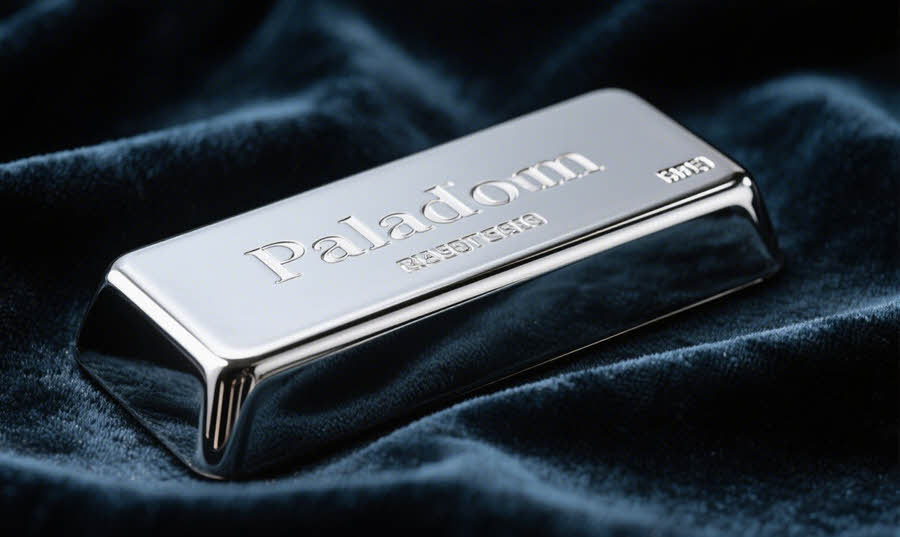Palladium is one of the lesser-known precious metals, yet in recent years it has commanded prices that surpass even gold.
Part of the platinum group metals (PGMs), palladium’s rarity, industrial importance, and market volatility have made it a subject of growing interest among investors, manufacturers, and policymakers.
Its story blends scientific discovery, industrial necessity, and shifting global supply chains.
Compared to gold and silver, which have been used for thousands of years, palladium is a relative newcomer to human history. It was discovered in 1803 by English chemist William Hyde Wollaston, just after he identified platinum. The metal was named after the asteroid Pallas, itself named for the Greek goddess Athena.
Initially, palladium was used in jewelry and dentistry, but as industrial applications expanded in the 20th century, its strategic importance grew sharply.
Where Palladium Comes From
Palladium is one of the rarest metals on Earth, even scarcer than platinum. It is primarily mined as a byproduct of platinum and nickel extraction. The largest sources are in Russia, South Africa, Canada, and the United States.
Russia’s Norilsk Nickel mining operations and South Africa’s PGM mines dominate global supply, which means palladium prices can be highly sensitive to geopolitical events, labor strikes, and production disruptions in those countries.
Industrial Uses Driving Demand
While palladium is classified as a precious metal, the majority of its demand comes from industry — especially the automotive sector. Key uses include:
Catalytic converters: Palladium is a crucial component in devices that reduce harmful emissions in gasoline-powered vehicles. Over the past two decades, environmental regulations worldwide have increased the amount of palladium needed per vehicle.
Electronics: Palladium is used in multilayer ceramic capacitors and connectors due to its excellent conductivity and resistance to corrosion.
Jewelry: Though less common than gold or platinum, palladium is used in fine jewelry, often as an alloy in white gold.
Dentistry: Palladium alloys have been used in crowns and bridges, though demand here has declined with new materials.
Hydrogen technology: Palladium has unique properties that allow it to absorb hydrogen, making it valuable in emerging fuel cell and hydrogen purification technologies.
Price Trends and Volatility
Palladium has seen some of the most dramatic price movements among precious metals. In the late 1990s and early 2000s, tightening supply and strong auto demand drove prices sharply higher, only for them to fall during economic slowdowns.
From around 2016 onward, palladium began an extraordinary rally, driven by stricter global emissions standards, especially in China, which boosted demand for catalytic converters in gasoline vehicles. By 2019–2020, prices had exceeded $2,500 per ounce, overtaking gold and platinum.
However, this surge has been accompanied by sharp volatility. Supply bottlenecks, substitution by automakers, and economic downturns can cause large price swings over short periods.
Palladium vs. Platinum
Although both metals are used in catalytic converters, palladium is favored in gasoline engines, while platinum is more common in diesel engines. As consumer preferences and regulations have shifted away from diesel — particularly after the 2015 “Dieselgate” emissions scandal — palladium demand surged at platinum’s expense.
This dynamic has led to situations where palladium’s price has been more than double that of platinum, prompting some automakers to explore switching back to platinum to control costs.
Global Supply Challenges
Because palladium mining is concentrated in just a few countries, geopolitical tensions can have an outsized effect on its availability and pricing. Russia’s role as a leading supplier has made the market particularly sensitive to sanctions, trade restrictions, and disruptions in shipping or production.
Additionally, since palladium is largely produced as a byproduct, increasing supply isn’t as simple as ramping up palladium mining directly — it depends on the economics and production rates of the host metals like nickel and platinum.
Investment Options
Palladium can be held in several forms: physical bullion bars and coins, exchange-traded funds (ETFs) backed by physical metal, futures contracts, and shares in mining companies that produce palladium.
Because the market is smaller and more volatile than gold or silver, palladium investments can see large price swings in relatively short timeframes. This volatility has attracted traders seeking short-term gains, but it also carries higher risk.
Future Demand Drivers
Several trends could shape palladium’s future market:
Environmental regulations: As long as gasoline vehicles remain on the road, emissions standards will drive demand for catalytic converters.
Automotive market shifts: The growth of electric vehicles (EVs) could reduce palladium demand in the long run, as EVs don’t require catalytic converters. However, hybrid vehicles still use them, potentially softening the impact.
Hydrogen economy: Palladium’s role in hydrogen purification and fuel cells could open new avenues for demand as countries invest in clean energy infrastructure.
Recycling: Palladium can be recovered from used catalytic converters, and advances in recycling technology could help meet some of the demand.
Why Palladium Holds a Unique Market Position
Palladium stands out for its combination of scarcity, industrial necessity, and investment appeal. Its price movements often reflect real-time shifts in manufacturing trends, regulations, and global supply conditions. While its market is relatively small, its influence in industries like automotive manufacturing is substantial.
This dual nature — part precious metal, part indispensable industrial resource — ensures that palladium will continue to have a role in global markets, even as technology and environmental policies evolve.



